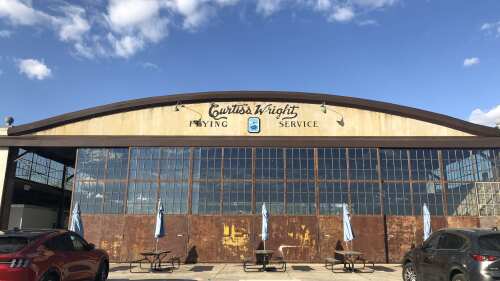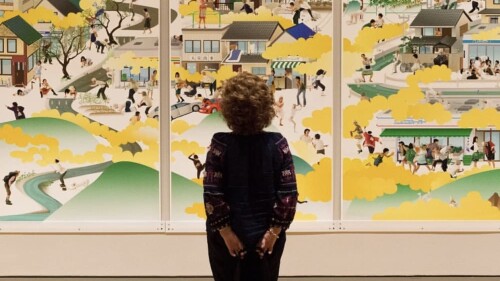Urban renewal in Columbia: the good + the bad.
This is part of our #TBT collaboration with Historic Columbia.
This week, we’re taking a look at a complicated topic in American history: urban renewal.
Whether you realize it or not, urban renewal shapes the very landscape of Columbia today. On one hand, it’s largely responsible for the physical growth of the University of South Carolina, the installation of green spaces on Elmwood Ave. and Bull St., the modernization of South Carolina’s capital city, and Cola’s first ever ecological conservation campaign.
But it’s also a large part of why the Ward One neighborhood was decimated, why many mom-and-pop and minority-owned businesses disappeared, why campus parking lots are so small, and why the stately Jefferson Hotel no longer looms proudly over Main St.
Like I said, it’s complicated.
The Makings of a Modern City
It’s 1949—World War II is in the rearview mirror and America is booming economically. The middle class is growing daily. More and more Americans are buying cars and taking to the open road. The problem is that Columbia’s main thoroughfares aren’t very open.
Urban renewal — at least the iteration we’re talking about — all starts around this time (1949) with the widening of Millwood Ave., Gervais St., (east of Harden St.), Rosewood Dr., and Bull St.
Now, Americans can drive their boat-like cars to Sears and purchase state-of-the-art appliances to go into their sleek mid-century kitchens.
We’ve said it before and we’ll say it again: the mid-20th century was Columbia’s moment. As automobiles poured in and dynamic (but often austere – can this simultaneously?), modern designs became popular, the city saw an opportunity to cast off the wet blanket of the Depression and stride boldly into the future.
But to make a long explanation short: Modernism didn’t play well with others.
Starting in the 1950s, Columbia sought to eliminate blight from the city through a county-wide Fight Blight campaign. Across the nation, communities sought to beautify their cities and towns—to reshape them as destinations for suburbanites. As we already established—mid-century modern housing existed primarily in the suburbs. An idealized world of ranch homes and pine trees and rolling azalea-covered hills already existed beyond the city. It was Columbia’s aim to beautify its downtown.
Banners promoted the beautification of homes; the number of public trash receptacles increased and were painted with blight-fighting slogans; papier-mâché litterbugs were locked in cages; and billboards sprang up everywhere urging citizens to be vigilant—blight could be anywhere.
What we talk about when we talk about blight.
Things that fell under the umbrella of blight included: vacant homes, abandoned buildings, derelict structures, substandard apartments and housing, litter, illegal dumping, graffiti, vacant lots, “adult businesses,” junkyards, and sites of heavy industry.
So what’s the big deal? Well, cities worried that blight bred blight. Decades later, in 1981, psychologists built upon the foundation set during Fight Blight when they conceived the Broken Window Theory (BWT). BWT hypothesizes that physical disorder (broken windows, abandoned buildings, graffiti) leads to social disorder (social deviance, prostitution, drug dealing, etc.). The superficial aim of urban renewal campaigns was to eliminate the possibility for social disorder in American cities.
Two different realities
On a nationwide scale, the “reclamation” of cities generally involved the displacement of people of color. Columbia is no exception.
Urban renewal affected different parts of the city in different ways. In the University Hill neighborhood, for example, large, Neoclassical and Italianate homes were demolished to make way for Modern offices or university buildings.
At 1429 Senate St. is the site of George L. Baker’s Neoclassical home. Built in 1901, his was one of the largest on the street. The five-bedroom, three-bath mansion included a four-car garage and a handsomely landscaped yard. After Baker died in 1924, his wife rented the home to boarders before selling it in 1934 at which point it became a venue for town social gatherings.

Rutledge Bldg image | Image courtesy Robert Carter
In 1965, during the height of urban renewal, the Baker House was demolished. It had fallen into less-than-pristine condition and lumped into the other homes on the block that were seen as “blighted.” In its place, Columbia-based firm Lyles, Bissett, Carlisle, and Wolff (LBC&C) built the Rutledge Office Building. A dramatic change, to be sure.
Rutledge is itself styled after the dramatic fluted columns found on the original Baker House. The American Institute of Architects presented the project with an Award of Excellence the year it opened.
When the University of South Carolina began to push further into University Hill, residents (the majority of whom were both monied and white) retaliated. Letters to the Editor of The State poured in by the dozens. Folks didn’t want their neighbors bought out or their ornate homes torn down.
All the while, the University continued to push south, toward the river. Here is where the distinct difference becomes apparent between what most white and black people experienced during urban renewal.
Blighted neighborhoods tended to be those with more impoverished populations. On the land where the Carolina Coliseum stands was once the Ward One neighborhood. Bounded by present-day Pickens, Gervais, Heyward and Huger St., Ward One was an historic community of black businesses, schools, churches, banks, and homes. This tight-knit community lived in what was seen by city government to be conditioned so blighted, they bordered on slum-like.
But the community itself was a victim of structural violence—the systematic disenfranchisement of African Americans across the South. A proud and strong neighborhood, Ward One lacked the fiscal means to maintain itself to the standards set forth by the all-white Fight Blight commissioners.
I will not clean-up.
I will not paint-up.
I will not fix-up.
I will not beautify.
And you know
WHAT I AM.
(A jackass.)
The cards were stacked against Ward One from the outset. Folks who couldn’t or wouldn’t “fix-up” their homes were seen as delinquents.
The strained relationship between the university (which didn’t admit its first African American students until 1963) and the Ward One community was further stretched when Carolina acquired 22 acres of land along Blossom St.
According to a survey conducted by the City of Columbia, of the 222 dwellings located on the 22 acres, 213 failed to meet the city’s minimum housing requirements.
The purchase displaced entire families from their neighborhood. According to The State newspaper from 1960, “one of the most difficult problems in the program will be the relocation of the families living in the project area.” Housing projects were erected with federal funds to house those who had been displaced. And while families were given new places to live, the sense of community they fostered was permanently disrupted.
COLAtoday (...get it?)
While urban renewal spurred a new era of growth in Columbia, it also displaced families and uprooted entire communities. From a preservation standpoint, urban renewal gives us immediate insight into what can happen when local memory is not preserved and cared for.
DYK? The Ward One community has a website dedicated to preserving the spirit and memory of its inhabitants.
Renewing Inequality from the University of Richmond is an insightful tool for evaluating the impact of urban renewal on minority populations across the South. They are currently looking for more information on Columbia’s housing projects. If you have something you’d like to share, let them know.
If you’d like to learn more about University Hill, pull out your phone and explore the neighborhood via Historic Columbia’s free web tour – we’re launching our free digital tours this month. And for those of you who’d like to stroll with a group, HC has a tour of Arsenal Hill on Saturday.
Bonus for those of you who are extra curious: If you’re interested in learning more about the images we used this week, take a gander at the incredible Joseph Winter Collection at the South Caroliniana Library.
If y’all need me, I’ll be cringing at that littering scene from “Mad Men.” Catch you in two weeks.
–Lois from Historic Columbia





















